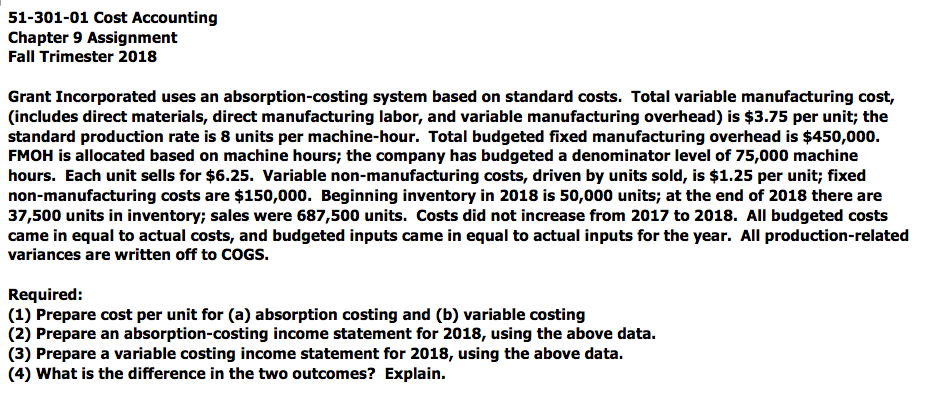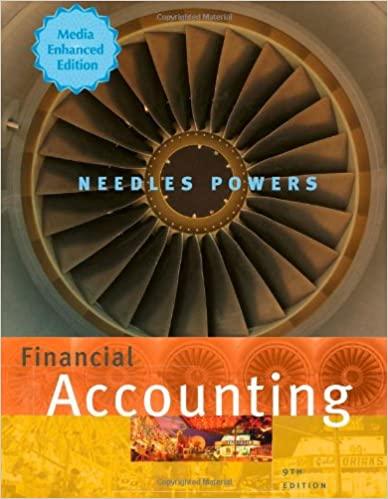
51-301-01 Cost Accounting Chapter 9 Assignment Fall Trimester 2018 Grant Incorporated uses an absorption-costing system based on standard costs. Total variable manufacturing cost, (includes direct materials, direct manufacturing labor, and variable manufacturing overhead) is $3.75 per unit; the standard production rate is 8 units per machine-hour. Total budgeted fixed manufacturing overhead is $450,000. FMOH is allocated based on machine hours; the company has budgeted a denominator level of 75,000 machine hours. Each unit sells for $6.25. Variable non-manufacturing costs, driven by units sold, is $1.25 per unit; fixed non-manufacturing costs are $150,000. Beginning inventory in 2018 is 50,000 units; at the end of 2018 there are 37,500 units in inventory; sales were 687,500 units. Costs did not increase from 2017 to 2018. All budgeted costs came in equal to actual costs, and budgeted inputs came in equal to actual inputs for the year. All production-related variances are written off to COGS. Required: (1) Prepare cost per unit for (a) absorption costing and (b) variable costing (2) Prepare an absorption-costing income statement for 2018, using the above data. (3) Prepare a variable costing income statement for 2018, using the above data. (4) What is the difference in the two outcomes? Explain. 51-301-01 Cost Accounting Chapter 9 Assignment Fall Trimester 2018 Grant Incorporated uses an absorption-costing system based on standard costs. Total variable manufacturing cost, (includes direct materials, direct manufacturing labor, and variable manufacturing overhead) is $3.75 per unit; the standard production rate is 8 units per machine-hour. Total budgeted fixed manufacturing overhead is $450,000. FMOH is allocated based on machine hours; the company has budgeted a denominator level of 75,000 machine hours. Each unit sells for $6.25. Variable non-manufacturing costs, driven by units sold, is $1.25 per unit; fixed non-manufacturing costs are $150,000. Beginning inventory in 2018 is 50,000 units; at the end of 2018 there are 37,500 units in inventory; sales were 687,500 units. Costs did not increase from 2017 to 2018. All budgeted costs came in equal to actual costs, and budgeted inputs came in equal to actual inputs for the year. All production-related variances are written off to COGS. Required: (1) Prepare cost per unit for (a) absorption costing and (b) variable costing (2) Prepare an absorption-costing income statement for 2018, using the above data. (3) Prepare a variable costing income statement for 2018, using the above data. (4) What is the difference in the two outcomes? Explain







